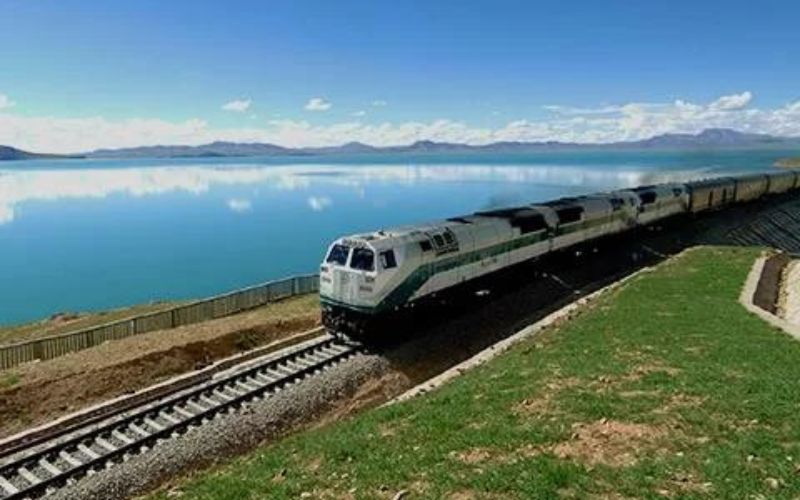
Source: Global Times/ Tibetan Review
China will crisscross the Tibet Autonomous Region (TAR) with 4,000 kilometres of railway lines by 2025 and will build 59 new airports and 300 helipads by 2035, according to CCP's 14th Five-Year Plan (2021-25), the region's authority's recent medium- and long-term railway network plans and recently released General Aviation Development Plan (2021-2035).
By 2035, the total railway network in TAR will be 5,000 km or more, including 1,000 km of double-track railway lines. Furthermore, by 2035, each TAR county is expected to have one or more general aviation airports, reported Global Times.
There are currently only three railway lines in operation in the region: the Qinghai-Tibet Railway, which opened in July 2006, the Lhasa-Shigatse Railway, which opened in 2014, and the Lhasa-Nyingtri Railway, which will open in 2021. According to the report, TAR had 1,359 kilometres of railway lines in operation as of the end of 2021.
The railway network, however, will cover all prefecture- and city-level administrative regions in TAR and provide convenient access to Xinjiang, Qinghai, Sichuan, Yunnan, and other neighbouring provinces, as well as major land ports along the border, according to the report.
According to the report, the TAR also intends to build an international railway corridor to South Asia in order to open the international railway channel between China and South Asian countries.
Major new railway lines scheduled to open by 2025 include the section between Ya'an in Sichuan Province and Nyingtri city in TAR of the Sichuan-Tibet Railway, the section between Shigatse and Pelku Lake in TAR of the Xinjiang-Tibet Railway, and the section from Bomi County to Ranwu Lake of the Yunnan-Tibet Railway.
China will also begin a new railway project in 2025, namely the railway in Shigatse City's Kyirong County. According to the report, railway passenger trips in TAR will reach 5.62 million by 2025 and 9.68 million by 2035. By 2025, 1.09 million tonnes of cargo will be delivered, while 10.29 million tonnes of freight will arrive by rail. And by 2035, these figures will have risen to 1.79 million tonnes and 13.03 million tonnes, respectively.
Furthermore, an aviation development plan for 2021-2035, released on February 2, stated that by 2035, one or more general aviation airports would be built in each county-level region in TAR. According to the report, TAR will have vigorously promoted the construction of general aviation airports and supporting security facilities by 2025, with the goal of building 14 new general aviation airports.
According to the most recent announced plans, TAR will have 59 general aviation airports by 2035, effectively ensuring that each county has one or more general aviation airports, and aviation services will cover more than 95% of the region's population, according to the report. TAR's long-term goal is to achieve leapfrog development in general aviation by 2035, according to the report.
The fast-paced growth of infrastructure in Tibet is "dual -use" in nature: they serve both civil and military purposes as far as PRC is concerned. China is building dual use infrastructure in Tibet to enable the rapid deployment of its forces at strategic locations in any eventuality but at the same time fulfill CCP's strategy of cultural assimilation of Tibet.
China claims that since the 1990’s, the government of the Communist Party of China (CPC) has made “an unprecedented scale of investment in infrastructure build-up in Tibet, specifically in the areas of connectivity such as railways, roads and airports”. Investments were also made in Tibet to build hydro-power energy, for urbanization, mining, tourism, military and government infrastructure. These massive investments in infrastructure build-up are in fact, Chinese strategy to strengthen its control over the region which it unlawfully invaded and occupied.
According to Tibet Policy Institute, China hopes that through this strategy, accompanied by an iron fist rule over Tibet crushing all expressions of dissent, they will ultimately subdue and disintegrate the resistance of the Tibetans within and outside of Tibet. Cities in Tibet like Lhasa, due to the influx of Chinese migrant workers along with the rapid urbanisation are seeing a growing trend of intermarriage between Tibetans and Chinese.
Edited and collated by Team TRC